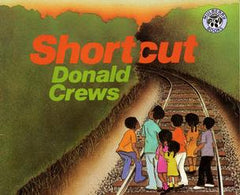Secure Checkout. FREE SHIPPING for Continental U.S. Orders over $60.
Menu
-
- Home
-
About Us
-
The Approach
-
Linking Language & Literacy
-
MindWing Learning
-
Learning Resources
-
SHOP
-
Blog
-
- About MindWing
- Our People
- Contact Us
- Your Account
- Login
-
United States (USD $)

Secure Checkout. FREE SHIPPING for Continental U.S. Orders over $60.
Kick-Off the Kick-Off
January 12, 2011

Is Maryellen Actually “Maryellen Who?”
December 16, 2010 1 Comment
 Theodor Seuss Geisel, better known to the world as Dr. Seuss, was born in 1904 on Howard Street in Springfield, Massachusetts – which is right around the corner from MindWing’s office. The Dr. Seuss National Memorial Sculpture Garden is located at the Springfield Museums near our office as well. The influence of Ted’s (Dr. Seuss’) memories of Springfield can be seen throughout his work.
Theodor Seuss Geisel, better known to the world as Dr. Seuss, was born in 1904 on Howard Street in Springfield, Massachusetts – which is right around the corner from MindWing’s office. The Dr. Seuss National Memorial Sculpture Garden is located at the Springfield Museums near our office as well. The influence of Ted’s (Dr. Seuss’) memories of Springfield can be seen throughout his work.
In keeping with the spirit of the holiday season, we wanted to share a lesson idea from MindWing’s book: East Meets West for the Holidays by Maryellen Rooney Moreau and Judy K. Montgomery. This lesson is based on one of Dr. Seuss’ most beloved holiday stories: How the Grinch Stole Christmas.

Comprehension Involves More Than Just the Beginning-Middle-End of a Story
November 08, 2010

This is a MindWing Concepts Map of the components of a story taking into consideration “story grammar.” It is called “The SGM® Episode Organizer.” The story grammar components, making up the beginning/middle/end of a story are shown as icons. The Character, Setting, Kick-off (problem or excitement), Feeling and Plan are in the beginning. The actions (attempts) to carry out the plan make up the middle and the Consequence and resolution make up the end.

Use Google Search Stories tool to develop narrative and expository language
October 12, 2010
Every year during the Superbowl, a few commercials stick out from the sea of repetitive beer, snack food, and summer blockbuster ads. This past year, one of the best was Google’s Parisian Love ad, which told the story of an American’s romance with a French woman in a simple and brilliant way, as an unseen character “Googled” various search terms that reflected events in his life. A follow-up ad about a girl switching schools, which I never saw aired, would be even more relatable for kids and is definitely a great model of a complete episode.
These commercials were so popular that Google created a wonderful tool that allows users to make their own Search Stories. Simply pick your search terms and the type of search you want shown in your movie (e.g. web, image, product, map, etc), select the music and upload to a YouTube account (if you have Gmail, you already have a YouTube account)...
Setting Can be the Key to a Story
September 27, 2010

My previous post discussed the narrative element of setting and the tendency of students on the autism spectrum (or with other language disorders) to leave out details about setting, causing listener confusion. One way to explore the importance of setting is to plan interventions using books with an integral setting- where the setting is key to the motivations of the characters and understanding of the plot.
One of my favorites in this vein is Donald Crews’ Shortcut, the story of a group of cousins who find themselves in unexpected danger after taking a shortcut home. Not only does the book serve as an excellent example of building suspense around a small moment in a personal narrative (great for students working on memoir), it also lends itself to being mapped both on a Setting Map and a literal, visual map to develop storytelling skills...

MindWing Concepts and Instructional Technology
April 27, 2010
I have long had an interest in how technology can provide context within our interventions, much the same way a storybook can provide context. In this approach to intervention, MindWing's tools have served as essential structure to help my students break down language, (as used with a website that provides information, for example) or organize and produce language (when used in conjunction with a creative “Web 2.0” resource that allows students to save and publish work). To focus on this latter "bottom-up" strategy, I suggest you check out Kerpoof, one of my favorite resources for its versatility and ease of use.
Kerpoof* is a free, interactive website recently acquired by Disney and is basically an online version of Kidpix Studio. Kerpoof's interface allows you to choose a background, characters and other setting elements, and add word/thought balloons and caption boxes (sounding promising?). You can create, share, export or print the resulting pictures or multi-picture story sequences...
